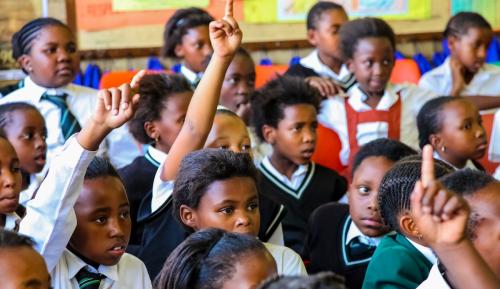Last week, the World Bank released preliminary results from an upcoming report that finds that the world as a whole is not on track to meet the 2030 U.N. Sustainable Development Goal on extreme poverty (SDG1). According to its estimates, global extreme poverty was 8.6 percent in 2018, down from 10 percent in 2015, and becoming increasingly concentrated in sub-Saharan Africa. Examining the SDGs further at the country level, a new Brookings working paper, How many people will the world leave behind: Assessing current trajectories on the Sustainable Development Goals, assesses where countries stand on achieving several SDG targets by 2030.
The Brookings working paper, authored by Homi Kharas, John McArthur, and Krista Rasmussen, evaluates 21 people-focused targets across nine SDGs (1-7, 11, and 16). Some of the indicators assessed in the paper include maternal mortality, access to electricity, malaria, and primary school enrollment. To assess 2030 prospects, the paper extrapolates recent trends on each indicator assuming a “business-as-usual” trajectory for each country. Trajectories are then compared to their respective absolute or relative outcome as dictated by the target, the latter measuring progress relative to a country’s starting point.
As the left panel in Figure 1 shows, using an average distance-to-the-frontier approach where zero is the furthest from the target in 2015 and 100 is the SDG goal, many African countries are among those furthest from achieving the absolute targets in 2030. However, as the authors note, this is due to starting well behind other countries and many, such as Niger, Burkina Faso, and Ethiopia, are on average expected to make considerable absolute progress by 2030 across the targets covered in the paper. As seen in the right-hand panel of Figure 1, countries are also making progress on relative targets, with Malawi standing out for covering more than 50 percent of the way by 2030 on current trajectory.
OECD countries, on the other hand, are much closer to the absolute SDG targets but struggle to cover the “last mile” and all fall short on achieving relative targets, as seen in Figure 2. While many African countries are further behind on absolute targets compared to OECD countries, they are making comparable progress on relative targets. Importantly, some low-income countries including Guinea-Bissau will accomplish similar shares of their relative target gap as many of the OECD countries by 2030.
The authors recommend using their results to focus attention on and address the policy, institutional, and resource constraints faced by those countries lagging behind. Further, they recommend increased international cooperation to help countries making positive, yet slower progress achieve breakthroughs and catch up.
Figure 1: The most off-track countries’ progress by 2030 under business-as-usual
Figure 2: OECD countries’ progress by 2030 under business-as-usual
The Brookings Institution is committed to quality, independence, and impact.
We are supported by a diverse array of funders. In line with our values and policies, each Brookings publication represents the sole views of its author(s).







Commentary
Figures of the week: Progress on the Sustainable Development Goals in sub-Saharan Africa
September 27, 2018